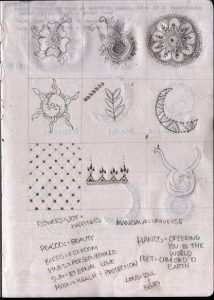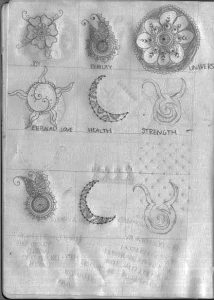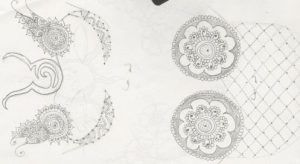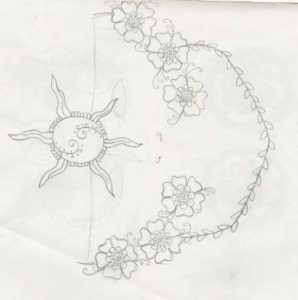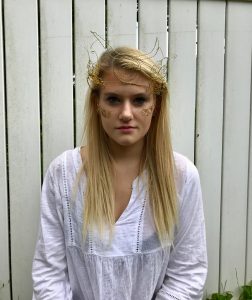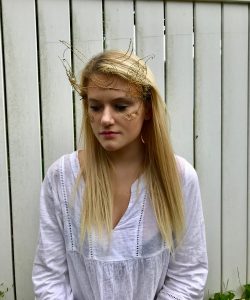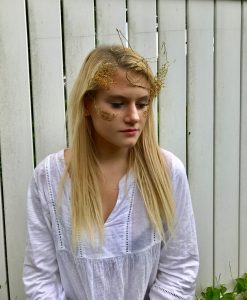The tradition of henna dates back to the Ugaritic civilization in the 7th millennium BC and was located in what is called today, Ras Shamra. The earlier uses for henna was to ornament the hands of the people to connect to their fertility goddess. The first evidence of henna use dates back to 2100 BC where henna was used to inscribe a tablet in North Western Syria. The henna tradition traveled across the world to places like India and Egypt where most people think it originated due to its growing conditions.
Henna is a 4-8 foot plant that it most commonly found in Iran, Pakistan, and most of the Middle Eastern region. To create the paste for use, the plant in its entirety is finely ground up and mixed with hot water. Depending on the user’s preference, it can also be mixed with indigo, tea, coffee, cloves or lemon juice. The plant itself contains a natural dye called tannins which gives it a red/ amber color when finished processing.
Most associations with henna are an ornament for a bride or a special occasion in a woman’s life. In the earlier days of Egyptian henna, the paste was to stain the fingertips and toes prior to mummification, or in their hair. Since henna gives a reddish brown pigment, it was also used to dye objects red. Other uses for henna are decorating the skin for celebrations, to heal, condition or to cool the skin. The decorations vary in meaning from culture, good health, fertility, wisdom, nature, and to display the beauty of skin.
There are three main categories for henna: Arabic, Indian, and African henna. Arabic henna is made up of more abstract designs that are less dense with graceful, large floral patterns. The designs are usually more spread out and cover the hands and feet.
For Indian henna, it is called mehndi. These designs are made up of fine, thin lines for larger floral patterns and dots. Most traditional mehndi has dense compact patterns and cover the hands, feet, arms and legs.
African henna is the most simple out of the three and consists of bold, large geometric shapes. African henna is also more abstract, similar to Arabic henna. Most African henna resides of the inner palms and hands.
The intricacy and detail to henna is what drew me into it. Today, henna is mostly used for traditional indian weddings or just for fun. For me however, I think henna tells a story. Each design is unique and conveys a meaning or emotion behind choosing that specific design. I also love how henna can be interpreted to the artist, and can be done free hand or based off of another design. To me, henna has the beauty of a mandala, a temporary art installation, but on your body to wear proud and to share with others. Henna starts a conversation- the amount of times I’ve been stopped on the street to be asked about the henna on my hands is overwhelming. The rich, organic color is warming to me, and brings me comfort (which makes sense since it has been used to heal the skin). I want to incorporate the detail, storytelling abilities, and healing of henna into my mask design.
To me, beauty is not black and white. Anything can be beautiful in the eye of the beholder. Beauty is all about perception, and to me details and patterns are what makes henna so beautiful. The specific characteristics like color, texture, and design all make up henna’s beauty.
For my designs, I wanted to incorporate the meaning of the henna patterns into what I think beauty represents. For me, beauty means having strength, being empowered, to love and to be healthy. I chose specifically which designs held the most meaning and which ones would have the strongest message for my mask design. It was difficult to narrow the three and six down because all the designs I chose I love and mean something to me. In the end, I am very happy with what I chose to represent the henna culture but also my ideals of beauty.
Both of my designs incorporate the meaning of various patterns and symbols. For me, I chose designs that I think reflects what beauty means to me- even adding a Taurus sign (which is my zodiac). I found it somewhat difficult with the designs I chose to connect them to make one cohesive mask. The parts I really want to highlight are the eyes and cheek bones, which I will do by either covering them with a design or leaving them open to see.

